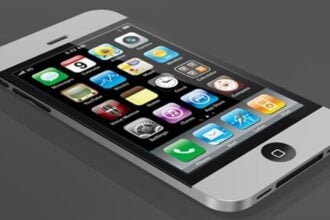The next time you run in the early hours of the day and then look up at your Nike-Fuelband, congratulate yourself. You are now a part of the digital ecosystem, where every second of human life is recorded, stored and analyzed.
What about big data and the fascination to wearables?
The next time you run in the early hours of the day and then look up at your Nike-Fuelband, congratulate yourself. You are now a part of the digital ecosystem, where every second of human life is recorded, stored and analyzed.
What about big data and the fascination to wearables?
With the advent of technology, smart phones have become smarter. But, then the devices have limitations when it comes to recording the human pulse. Over a period in time, the sensor technology has improved. It has now come back to join us, what in digital parlance, is called as a “wearable”. Almost like a wrist watch. Connected via wireless to your smart phone. It will tell you about your heart rate, your BMI (Body Mass Index) and will essentially act as a personal conscious keeper, in regards top your health. But, wearblaes have not limited themselves to just your health. Apple and Samsung have gone further, into turning your wrist watch into a communication device. So you can now search, look, check your watch not just for the time, but also for the same kind of information you would have, with your phone.
The data that flows from this constant monitoring of health and happiness accumulate into a huger mass called Big Data. As the name suggests, it is big.
The PSD (Personal Sensing Device) basically follows a three step Knowledge Discovery Process or a KDP.
- Data processing
- Data mining
- Data evaluation and hence data presentation
The MIT Technology Review suggests that 99.5% of newly created data remains unanalyzed. This is where the scope of using the data arises.
How is data acquired?
There are numerous sources of data, all simply embedded in plain eyesight. Smart phones and Wearables have technologies which help one to know more about himself/herself. So what are the classifications? The table below will provide you with an insight of where all data can be procured from.
The flip side to all these data is the ever increasing fear of theft. Identity theft at the times of Big Data is a reality; most major organizations are concerned of.
However, the advantages are many. Wearables give you a real time access to your positional as well as medical information. Moreover, while it is a bit cumbersome and unsafe, to look at one’s phone all the time, a Wearable makes it easier.
IDC (International Data Corporation) estimates that 19 million units of wearable were shipped in 2015. That figure is going to rise to 111.9 million units by 2018.
So how are organizations combining Big Data with Wearables?
Adidas has built the miCoach which links your GPS and email. It checks the route and then showers you with offers. Nike has its own smart devices in the form of a football. These companies are investing vast amounts on Wearables to get greater access to you with more pointed references. Since more detailed data will give greater analysis and hence more a focused approach to sales.
Organizations are also investing a lot more on apps to enmesh them with their Wearables. It is also a way to garner greater clientele base and retain the loyalists.
How can you Mine Personal Data with Smart Phones and Wearable Devices?
A survey by Muhammad Habib Ur Rehman , Chee Sun Liew , Teh Ying Wah , Junaid Shuja, and Babak Daghighi proves just how easy it can be to mine data with the right mobile app solution. For instance, physiological sensors in the mobile app can be used to acquire the heart rate and Glucose levels of the patient. User inputs can be gathered from user behavior on screen keyboard. And user data can be accessed from the Contact and List. Here is a table below on some of the information you can get of your customers from a good mobile app.
Data Source Type | Nature of Data Source | Data Source |
| Physiological | Heart rate, Glucose levels |
Sensors | Environmental | Temperature, Humidity, Air Pressure |
| Navigational | GPS |
|
|
|
User Interaction | User Input | Microphone, On-screen keyboard, Camera |
|
|
|
| Application Logs | Web browser logs |
Device-resident | Communication logs | Web logs, Wi-Fi logs |
| User data | Contact List, Call List, SMS Data |






